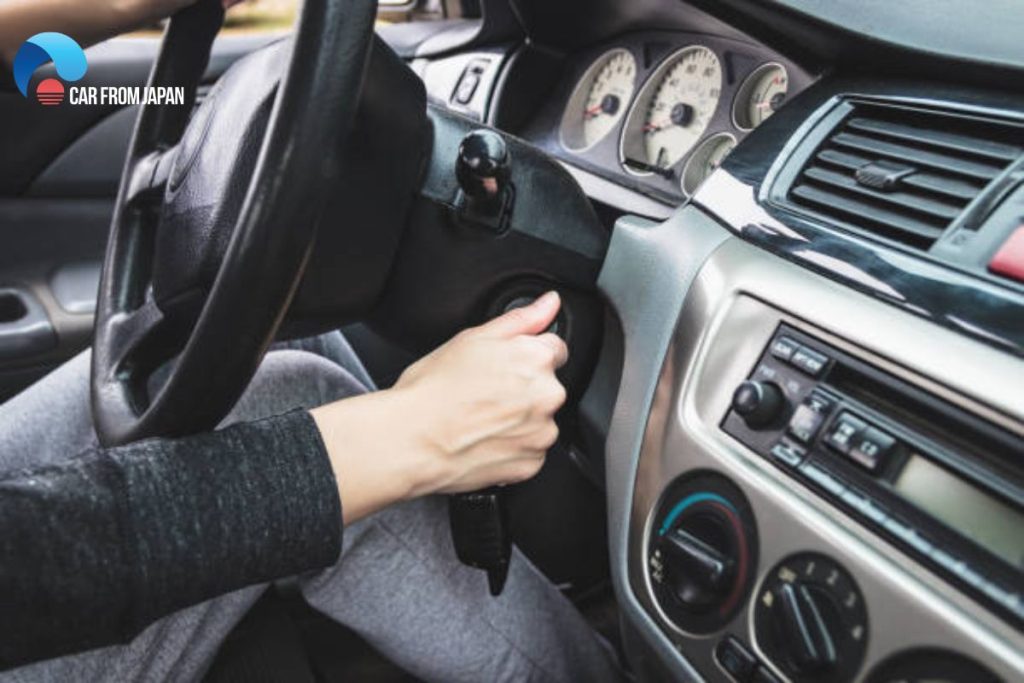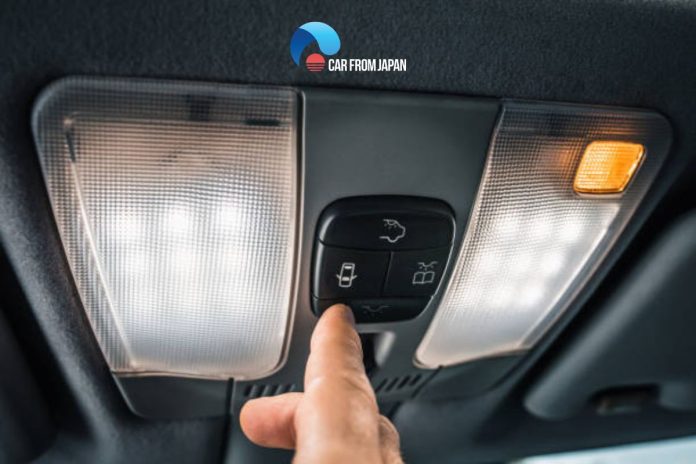What happens when the car wont start but lights come on? Your car always chooses the worst time to break down. Sometimes, many drivers didn’t expect this problem and don’t understand what is the root of the problem. Don’t worry! We will go over some of the possible reasons and how you might be able to fix this issue. Identifying the cause of the car having trouble starting will become easier if you keep some of the following experiences.
Contents
5 Main Reasons Cause Your Car Wont Start But Lights Come On
Suddenly, one day, when you got into the car, turned the key and only received a “click” sound, and then turned it off, or it did not start at all. However, the headlight, dashboard light, radio, or other electronics indicate that there is still power.
Surely, many drivers experience this ironic situation when using cars, and if you do not know the reasons, you may have to spend a lot of money to repair it. Several factors might be responsible if your car refuses to start, but the light keeps turning on. Please note whether or not the light is on, you should avoid turning the key for a long time, as it might destroy the starter engine.

Weak battery
Just because some electrical components generate power does not mean your car is in good condition. The most common thing is just going to be that it has a bad battery connection or a weak battery. A battery on a low charge can run electronic devices like lights because they use little amperage. However, starting an engine requires up to 300 amps of power at once. A low battery can not generate such power.
Generally, the weak battery can still have enough power to keep the lights on, but not enough amperage to generate enough voltage to turn on the motor. One of the main factors affecting the performance of the battery is the charge; if the charge is reduced too much, it will not be enough to start the car, and the charge of the battery on the reduced.
Because some electronic devices in the car still work after the car engine is turned off. Alternatively, you should also check the battery terminals; this part can be corroded, making the connections loose and seriously affecting the conductivity of these terminals and especially the starting process.
A fuse is blown
After you have attempted to fix the battery, but the issue still happens, let’s check whether your fuse works properly or not. If you can’t locate the position of the fuse, refer to your car’s manual to discover where this part is in your car. Once you’ve identified it, open it up and inspect it for a wire. If the wire inside the casing is burnt or damaged, this is the problem. Power isn’t getting to the starter.
Damaged ignition switch
If nothing is wrong with the fuse, the switch is the third reason to check again. So many people mistake the ignition switch for the mechanical part where they insert the key, but the electrical one operates the mechanical part. Only a professional can diagnose this fault and also repair it. However, to be sure it’s a switch, take notice of your dashboard and panel, move the key ignition to the second position, and if it doesn’t bring up the light, the ignition switch is faulty.
Bad starter
Another possibility is that you have a damaged starter. A broken starter is also one of the leading causes of your car not being able to start, but the lights still come on. A starter is a device that is connected to the battery. It’s responsible for putting the engine in motion as the ignition switch comes on.
So when this part is faulty, your engine will not come on when you turn the key in the ignition. Once you turn on the car, it will refuse to start, and you hear a sound like “clicking”. It may work if you try to jumpstart the car, but there is no guarantee. The one guaranteed choice is if you get a new starter.
The cause of a bad starter can be damage to the gears and bearings of the starter during use, and this is usually reported by the vehicle when the engine is turned off during starting. If you turn the key to Off, or you leave the headlights on and then turn on the Ac / on position, and you observe that the headlights are dim, you need to replace a new starter immediately.
In addition, when starting the car, the engine does not start, but you still hear a crackling sound inside. This is caused by the electromagnet tubes in the starter closing and disconnecting immediately.
The gear lever is not in the correct position
For new drivers, it is very normal to be negligent while shifting the gear. Once this error has been made, new drivers will certainly learn from the experience of handling quickly when the car is turned off.
When you turn on the key, start but the engine is still not working, the light on your dashboard flashes, the cause may be because you put the gearshift in incorrectly (not to position P for automatic transmission), or you are gearing and not depressing the clutch for a manual transmission.
No sparking
Starting your engine takes fuel, spark, fuel compression, and time. Without one of these factors, your car won’t start; however, the light is still on, and one of the most common mistakes is a lack of ignition.
When you push the start button, but the car does not start, the cause may be a faulty spark plug or igniter. In addition, it is not enough for the spark, it needs to be at the right time and give enough voltage for your car to operate. If you are driving but the car turns off the engine in the middle, you should take the car to check the spark plug and ignition system.
Car Wont Start But Lights Come On: How To Fix?
A car that won’t start but the lights come on is a warning sign that the vehicle’s engine or fuel system is having problems. When encountering this situation, the driver needs to have appropriate handling to be able to continue the journey. To be able to fix the problem of why the car doesn’t turn on, you can refer to the following ways:

Low battery
When your battery is just either gone bad or lost its charge but it doesn’t have enough juice to turn the starter over, which turns your engine on. So in this case you need to recharge your battery. If this problem occurs while you are driving on the road, the solution is to use a rechargeable cable to power the battery.
However, when charging the battery, you should choose a battery that works well and has a voltage equal to or greater than the voltage of the vehicle. The restart rate in this case is 70%.
If the car does not start due to a broken power wire or a broken fuse due to the car not going for a long time, the power line will be peeled. The first thing you need to do is check the fuse box. If the fuse is damaged, it should be replaced.
Loose battery connection
When you experience this situation, you should remove the clamp, clean the battery terminal, and re-tighten the wire clamp. At the same time, you need to adjust the electrolyte level inside the car.
Use jump starter or backup chargers
An optimal solution is given for unexpected situations when the car does not start. It is the use of backup chargers or jump starters. The battery charger has now become popular. Modern drivers know how to immediately pack a large backup battery charger, which can charge your battery fully. In addition, you can also use jump starters sold in the market. If the battery is damaged, it must be replaced with a new one to keep the vehicle in good working order.
How to avoid the car not starting
To prevent the car from not turning on, you should note:
- When turning off the car engine, turn off all electrical equipment, even the lights
- Replace the car battery after 100,000 km or 4 years of driving.
- Clean car spark plugs periodically every 20,000 km, replace spark plugs every 40,000 – 100,000 km
- Check and clean automobile fuel injectors periodically, every 20,000 km
- Check relays, and fuel pumps… periodically every 20,000 km
In case the car is found to have signs of a difficult engine to start, take the initiative to check or take the car to the garage for inspection as soon as possible.
FAQs
What causes a car not to start but the lights come on?
Your standard 12-volt car battery is likely the problem if your headlights work but the engine won’t turn over, or if your radio won’t turn on, and your check-engine light only flashes briefly.
What happens when the starter motor fails?
If your engine won’t turn over, a faulty starter is the likely culprit. The most common sign is hearing nothing when you turn the key, but you might also hear unusual clinking, grinding, or whirring noises. Ignoring these sounds can eventually damage the engine’s flywheel.
My engine is turning over (cranking) but won’t actually start. Is that different?
Yes, that’s a very different problem. If the engine is cranking, your battery and starter are working. The issue is likely with one of the three things an engine needs to run: fuel, spark, or air. This could mean a bad fuel pump, a clogged fuel filter, or an issue with your ignition system.
Final Thoughts
Ultimately, when your lights work but your engine won’t start, the problem usually boils down to three main areas. Start by suspecting the battery, as it’s the most common cause. If a jump-start doesn’t work or the symptoms don’t match (eg, you hear grinding), your focus should shift to a faulty starter or a bad electrical connection. By understanding these common failures, you can save time and stress by quickly identifying the likely source of the problem and getting back on the road.



